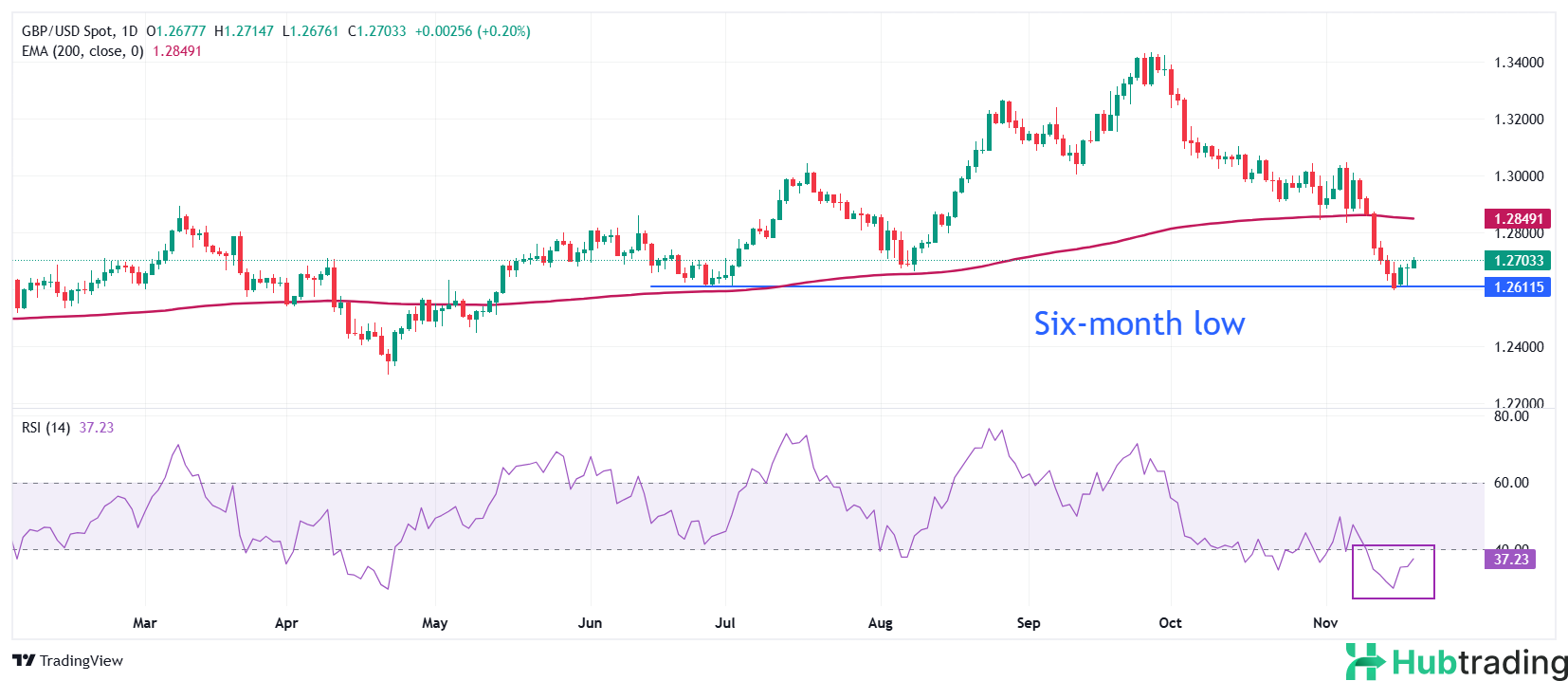- The Pound Sterling surges following stronger-than-expected UK inflation data for October.
- The higher inflation could reduce the likelihood of the Bank of England implementing another interest rate cut in December.
- Several Bank of England policymakers have expressed concerns about persistent price pressures.
The Pound Sterling (GBP) surged against most of its peers on Wednesday after UK inflation data for October exceeded expectations. The Consumer Price Index (CPI) report revealed that annual inflation rose to 2.3% YoY, up from the expected 2.2% and the previous month’s 1.7%.
Month-on-month, headline inflation jumped by 0.6%, surpassing the forecasted 0.5% increase after remaining flat in September.
Core CPI, which excludes volatile items like food, energy, oil, and tobacco, grew by 3.3%, higher than the previous reading of 3.2%. Economists had expected core inflation to ease to 3.1%.
Services inflation, closely monitored by Bank of England (BoE) officials, rose to 5%, up from the prior 4.9%. The further acceleration in price pressures could prompt traders to reconsider their expectations for a rate cut at the BoE’s December policy meeting.
On Tuesday, traders had priced in an approximately 80% chance of the BoE cutting rates by 25 basis points (bps) in December, according to Reuters.
Several BoE policymakers, including Governor Andrew Bailey, cautioned that price pressures are likely to persist. In his testimony before the Treasury Select Committee (TSC), Bailey noted that "services inflation remains above a level consistent with the bank's target." BoE external member Catherine Mann, a known hawk, stated, "Financial markets' inflation expectations suggest the BoE will not reach sustainable 2% inflation within the forecast horizon."
Daily Market Digest: Pound Sterling Outperforms Major Peers but Retreats Against US Dollar
- The Pound Sterling saw strong performance against most major currencies but lost its intraday gains against the US Dollar (USD) after briefly reaching 1.2700 in Wednesday’s London session. The GBP/USD pair gave up its gains as the US Dollar rebounded sharply, with the US Dollar Index (DXY) climbing to around 106.50, driven by expectations of fewer interest rate cuts from the Federal Reserve (Fed) in 2025.
- With President-elect Donald Trump set to implement his economic agenda smoothly, market participants anticipate a more gradual policy-easing cycle from the Fed. Expectations are that US inflation and economic growth will rebound when Trump takes office, fueled by policies like higher import tariffs and tax cuts, which are expected to boost domestic demand and employment.
- While Fed officials have refrained from commenting on the specific impact of Trump’s policies, they remain confident that inflation will stay on track toward the Fed’s 2% target.
- For the December meeting, the likelihood of the Fed cutting interest rates by 25 basis points (bps) to 4.25%-4.50% has decreased to 59%, down from over 82% a week ago, according to the CME FedWatch tool. Market expectations shifted after Fed Chair Jerome Powell’s comments last Thursday, stating that the US economy “is not sending signals that the central bank needs to rush to lower interest rates.”
- Looking ahead, investors will focus on the upcoming flash S&P Global Purchasing Managers’ Index (PMI) data for November, set to be released on Friday. The report is expected to show expansion in US private sector activity, while UK activity is forecasted to remain steady.
Technical Analysis: Pound Sterling Extends Recovery Toward 1.2700

The Pound Sterling has risen above the key resistance level of 1.2700 against the US Dollar. The GBP/USD pair broke out of a three-day trading range between 1.2600 and 1.2700, pushing higher. If the recovery holds, the pair could extend its gains toward 1.2800. On the downside, the six-month low at 1.2600 remains a critical support level.
The 14-day Relative Strength Index (RSI) has bounced back from oversold conditions below 30.00. However, the overall momentum is expected to remain bearish until the RSI breaks above the 40.00 level decisively.
The broader trend remains negative as the pair continues to trade below the 200-day Exponential Moving Average (EMA), currently around 1.2850.





